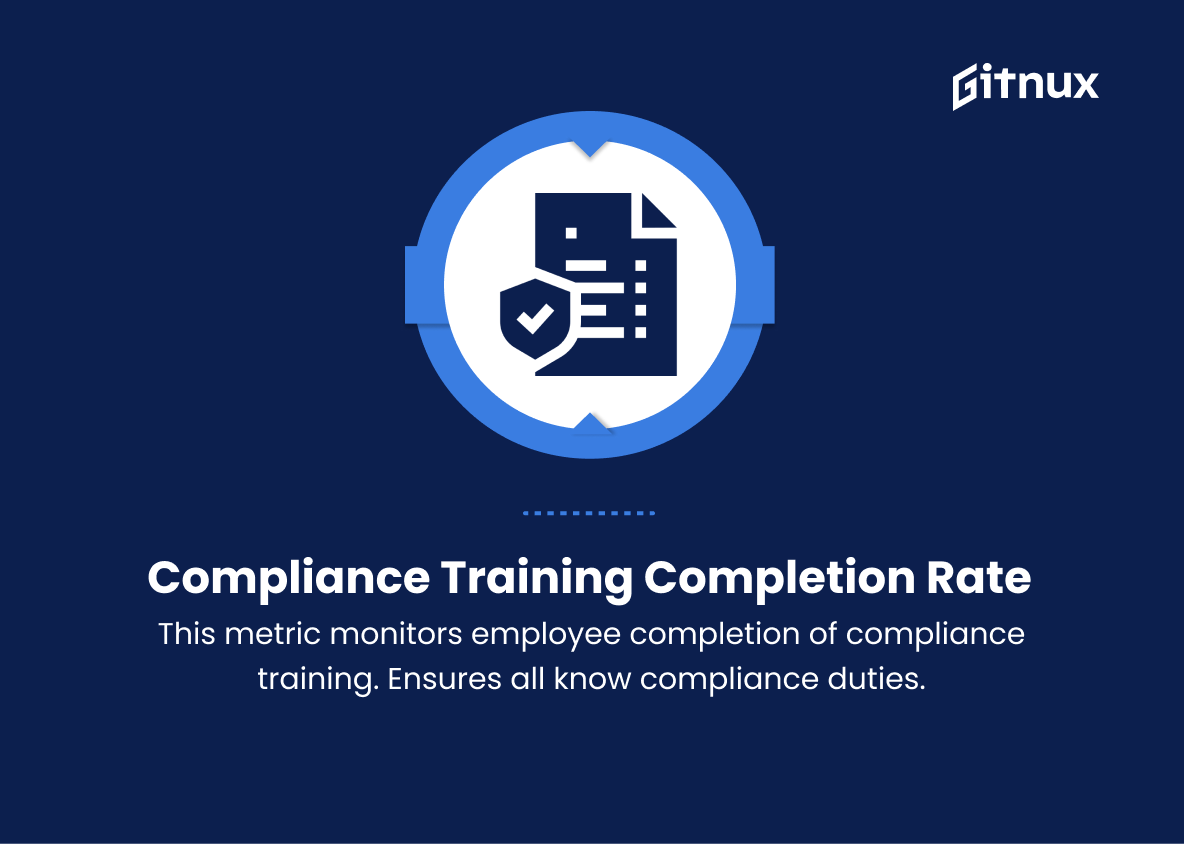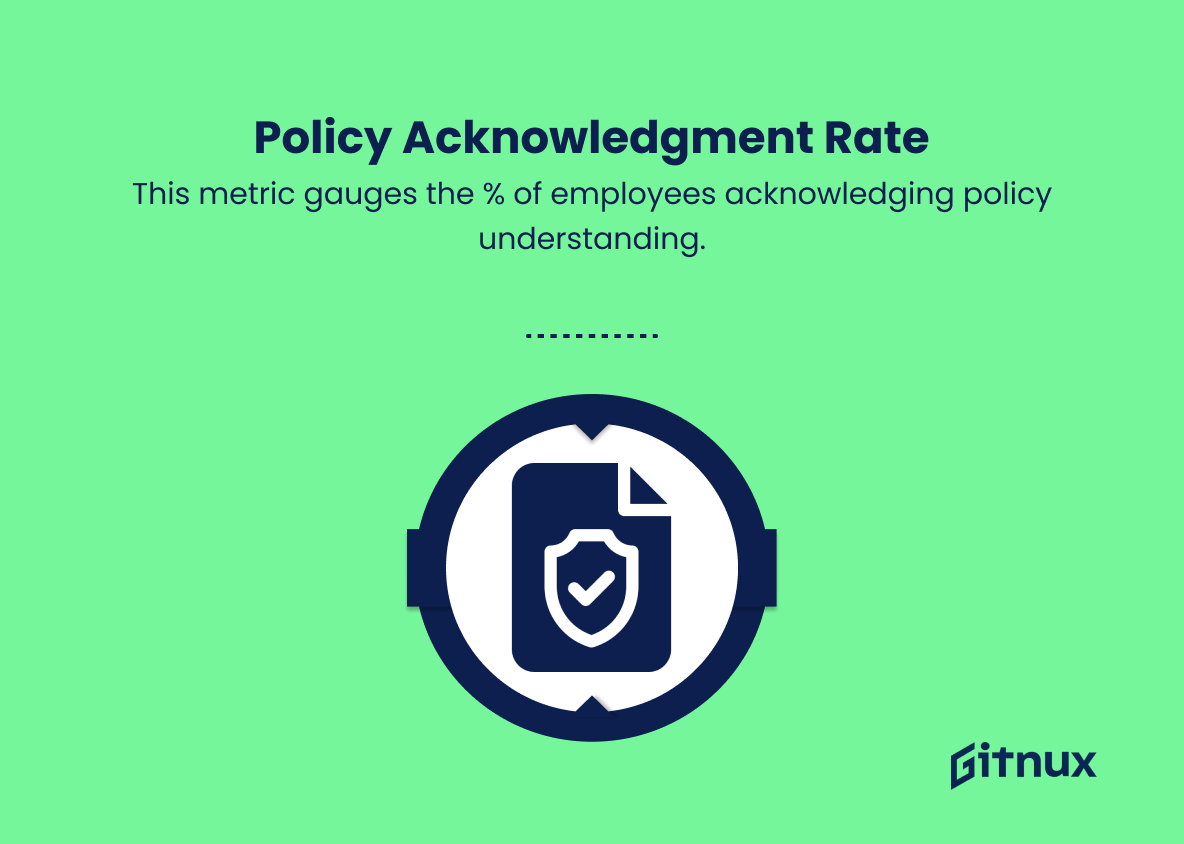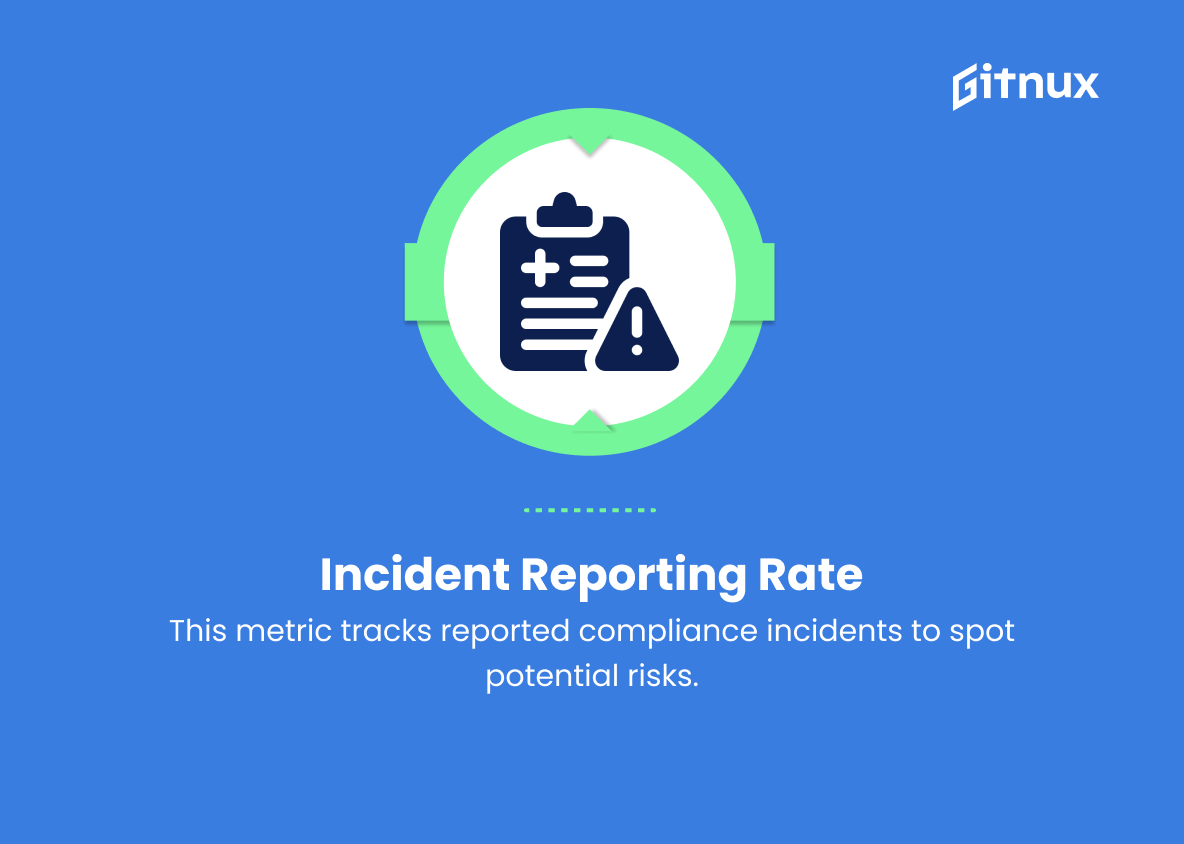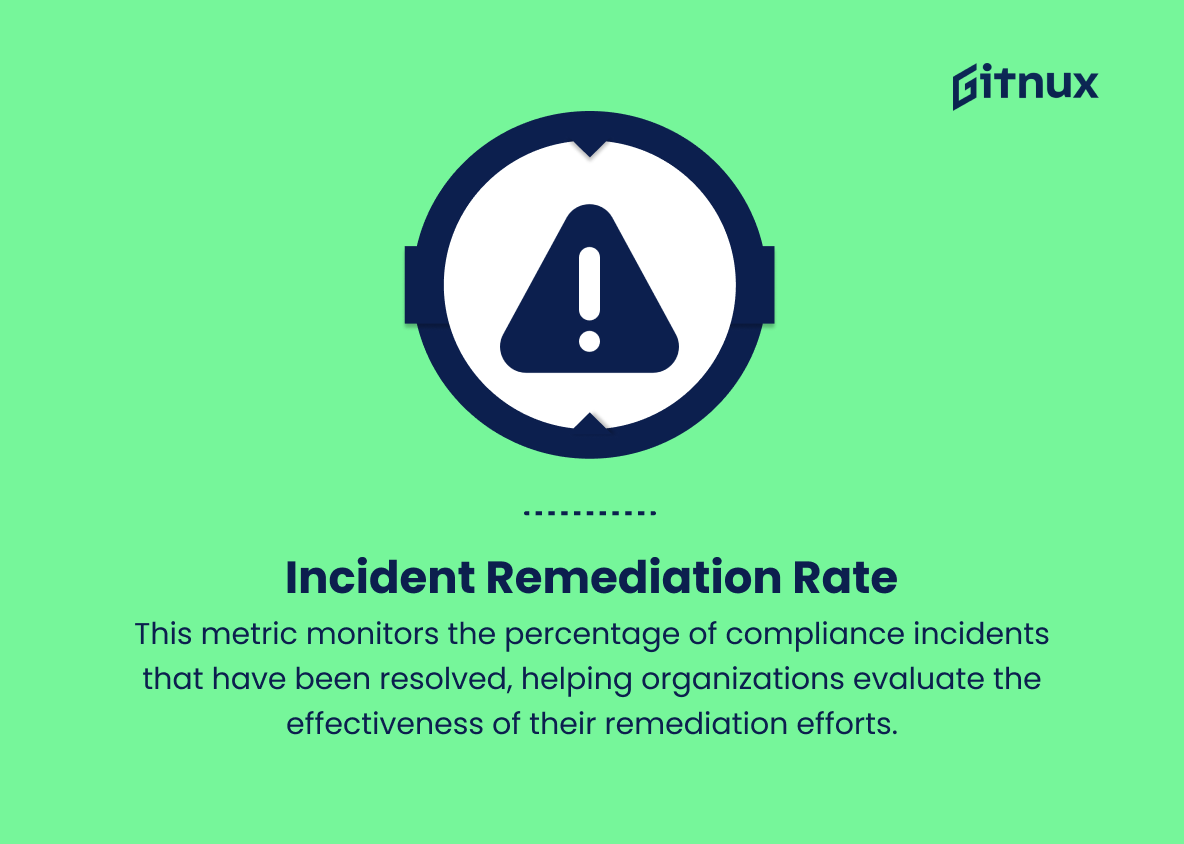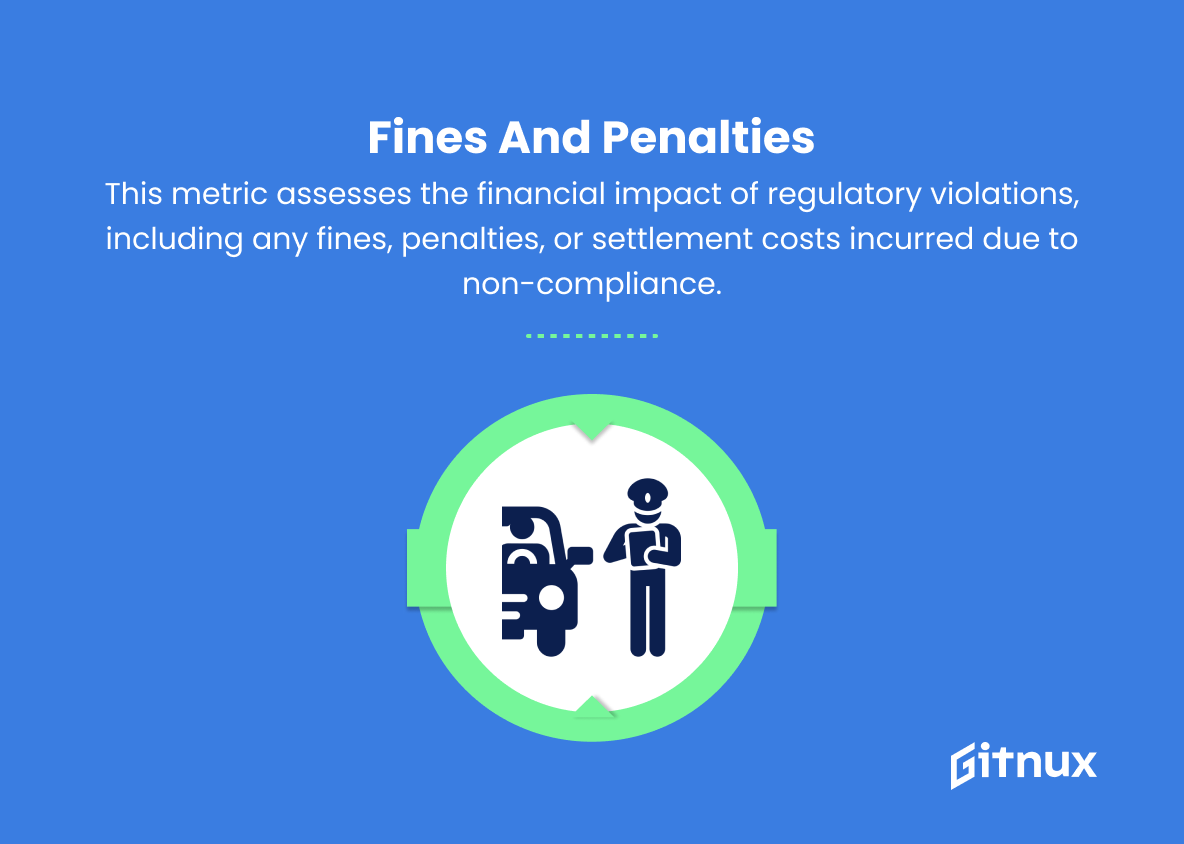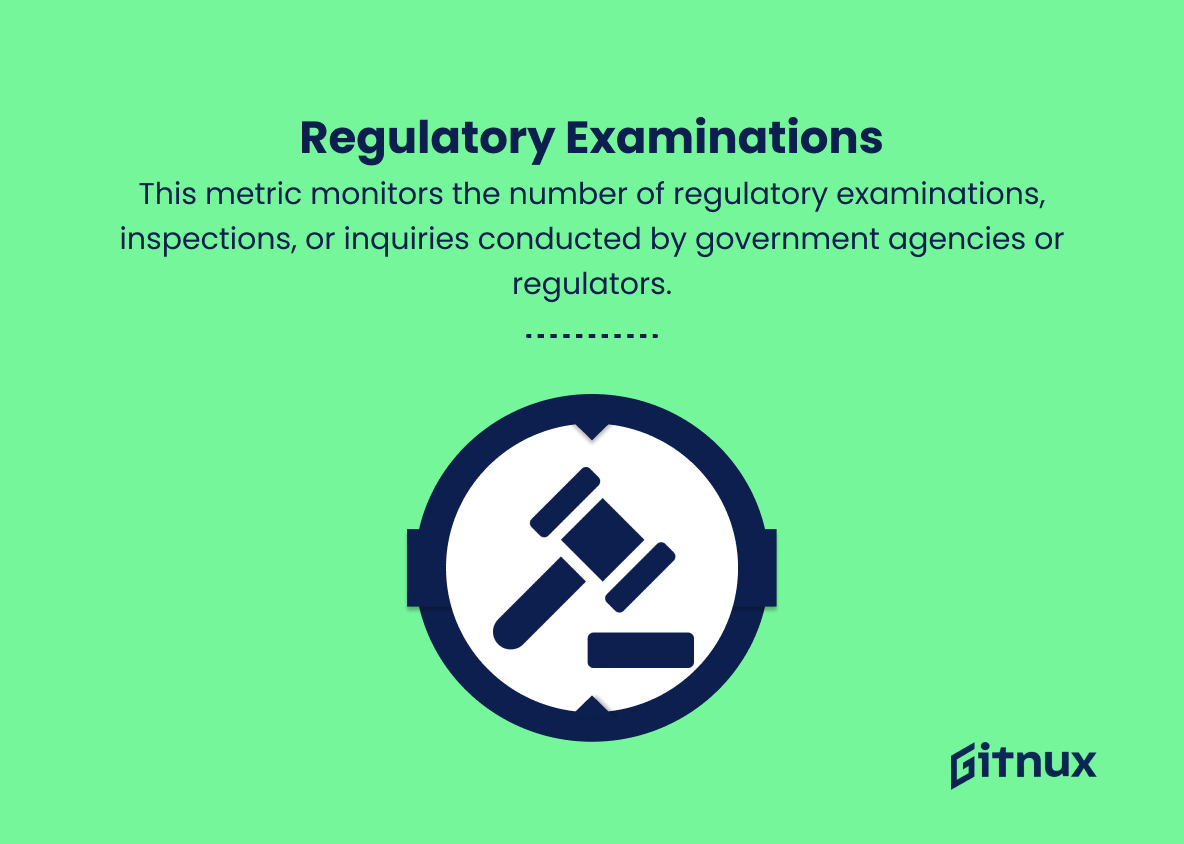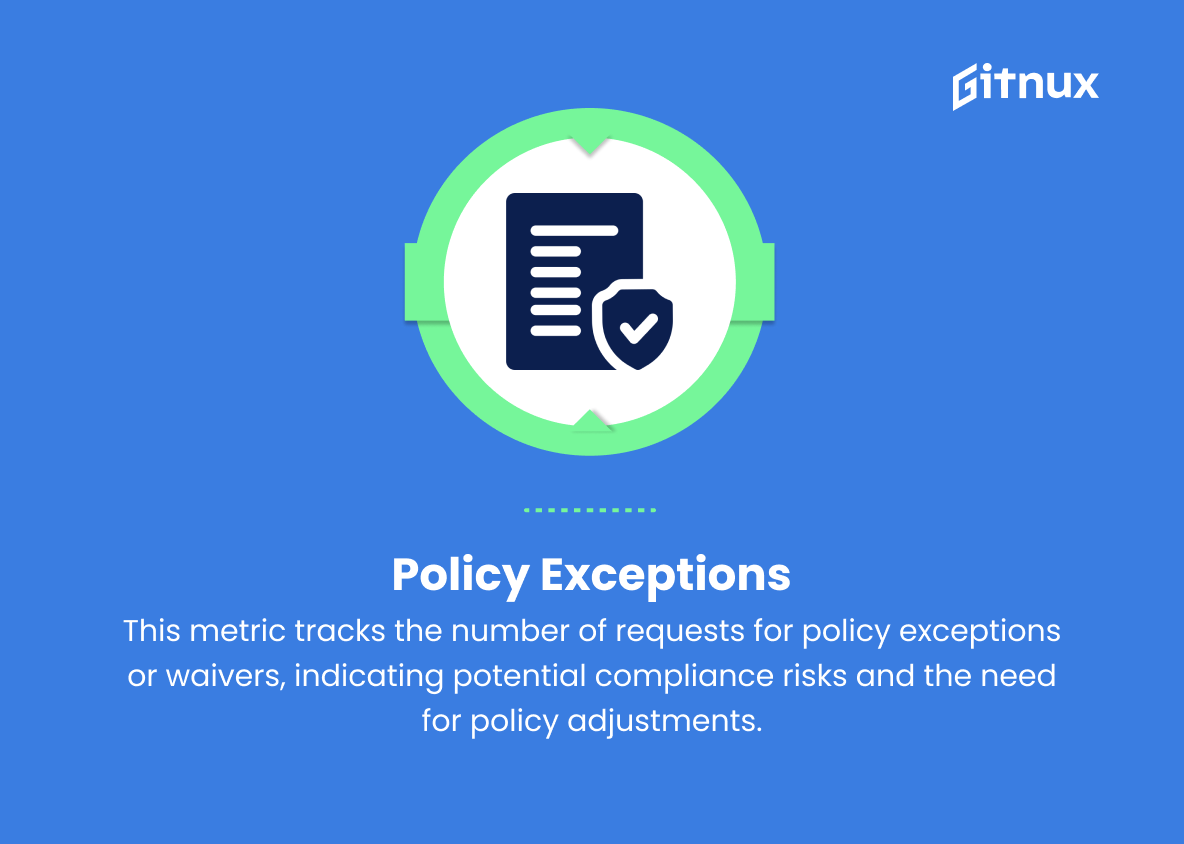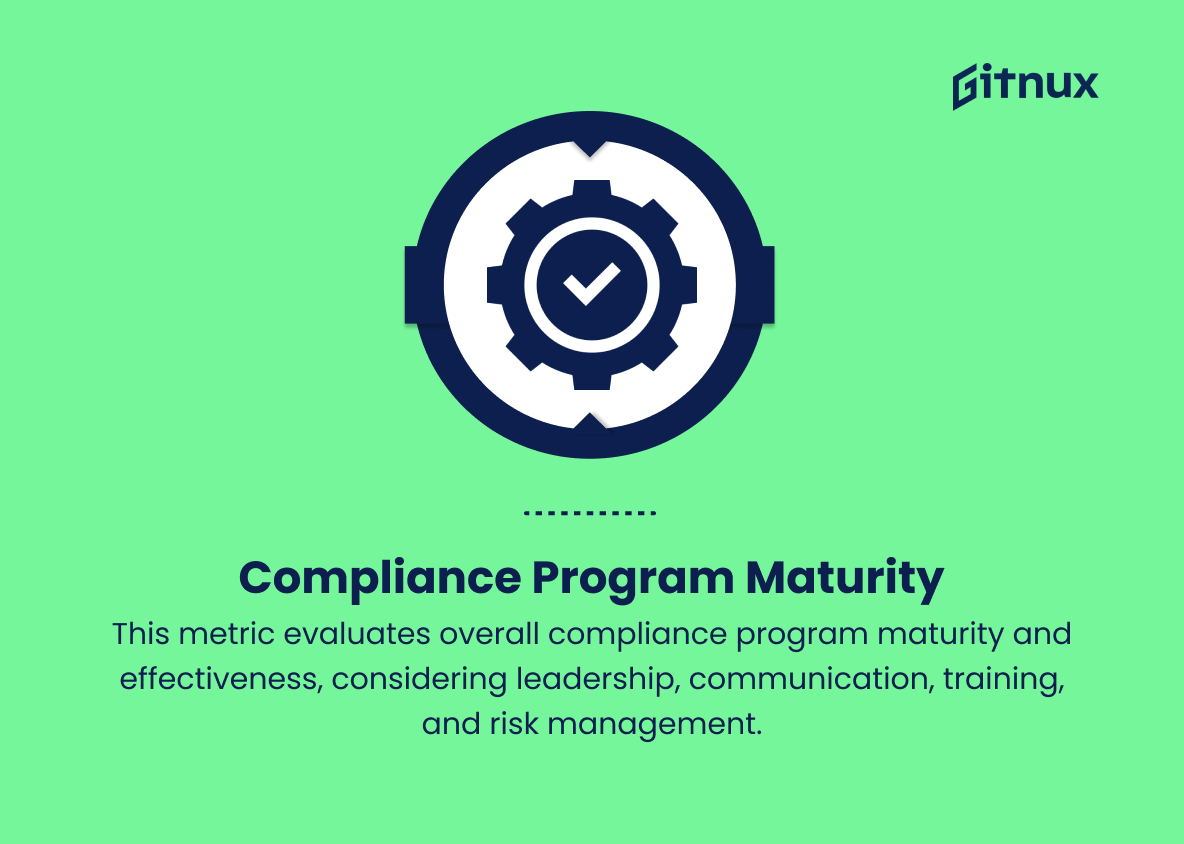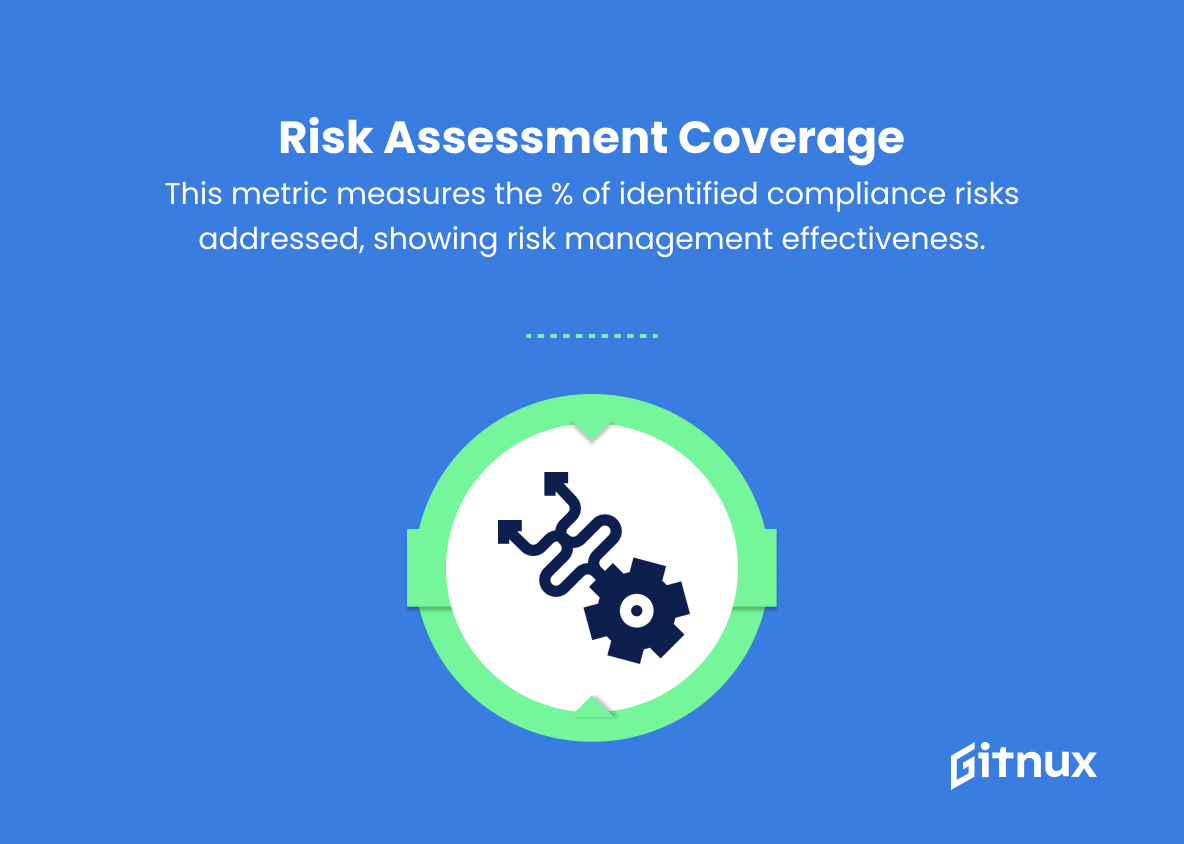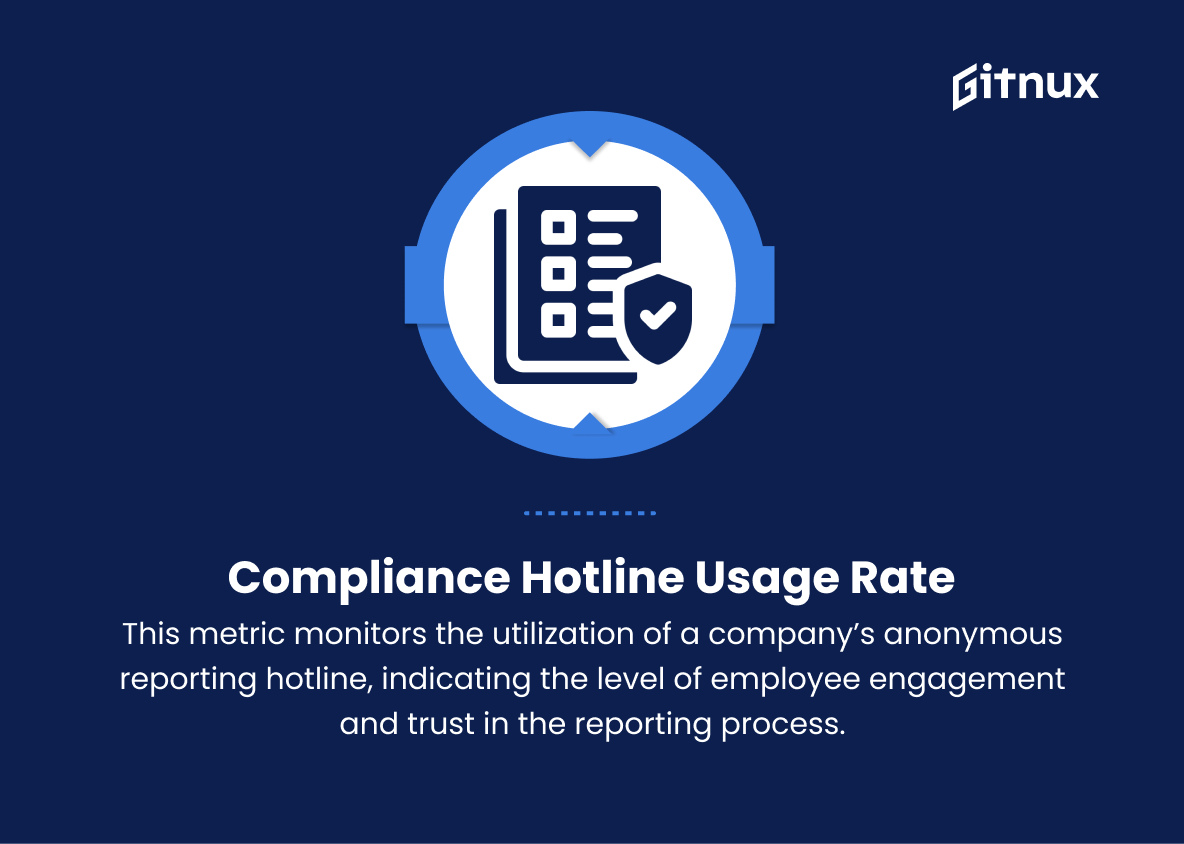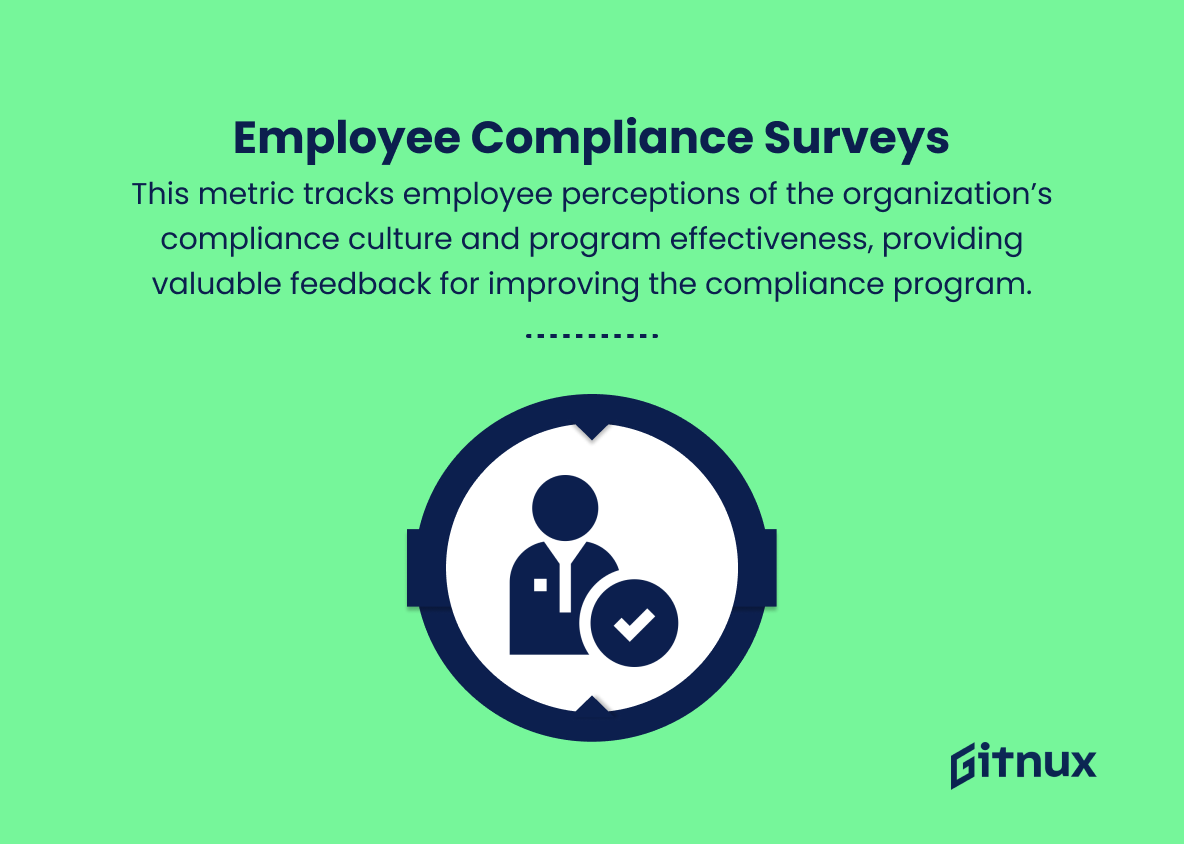In today’s fast-paced business environment, maintaining regulatory compliance is not just a necessary requirement, but a critical element in ensuring a company’s overall success and sustainability. Navigating the complex labyrinth of federal, state, and industry-specific regulations can seem like a daunting task, but by leveraging the power of compliance metrics, organizations can efficiently streamline their processes, assess risks, and ensure adherence to pertinent guidelines.
In this insightful blog post, we will explore the importance of compliance metrics, the various types of compliance KPIs, and how organizations can effectively implement and monitor these vital performance indicators to bolster their risk management strategies and achieve compliance success.
Compliance Metrics You Should Know
1. Compliance Training Completion Rate
This metric tracks the percentage of employees who have completed mandatory compliance training programs. It helps organizations ensure that all employees are aware of their compliance responsibilities.
2. Policy Acknowledgment Rate
This metric measures the percentage of employees who have acknowledged reading and understanding organizational policies, such as the code of conduct, anti-harassment, and anti-discrimination policies.
3. Incident Reporting Rate
This metric gauges the number of reported compliance incidents, such as breaches of regulations and codes, misconduct, or conflicts of interest, allowing organizations to identify areas of potential risk and vulnerability.
4. Compliance Investigations
This metric tracks the number of investigations initiated in response to reported incidents, as well as their status (ongoing, resolved, or closed).
5. Compliance Incident Remediation Rate
This metric monitors the percentage of compliance incidents that have been resolved, helping organizations evaluate the effectiveness of their remediation efforts.
6. Fines and Penalties
This metric assesses the financial impact of regulatory violations, including any fines, penalties, or settlement costs incurred due to non-compliance.
7. Audit Findings
This metric tracks the number and severity of findings from internal or external audits, which can indicate areas of compliance risk and areas for improvement.
8. Regulatory Examinations
This metric monitors the number of regulatory examinations, inspections, or inquiries conducted by government agencies or regulators.
9. Policy Exceptions
This metric tracks the number of requests for policy exceptions or waivers, indicating potential compliance risks and the need for policy adjustments.
10. Third-Party Risk Assessments
This metric evaluates the compliance-related risks associated with third-party vendors, suppliers, and partners, helping organizations reduce risk in their supply chain.
11. Compliance Program Maturity
This metric assesses the overall maturity and effectiveness of an organization’s compliance program, taking into account factors such as leadership, communication, training, and risk management.
12. Risk Assessment Coverage
This metric calculates the percentage of identified compliance risks that have been assessed and addressed, allowing organizations to determine the effectiveness of their risk management efforts.
13. Compliance Hotline Usage Rate
This metric monitors the utilization of a company’s anonymous reporting hotline, indicating the level of employee engagement and trust in the reporting process.
14. Employee Compliance Surveys
This metric tracks employee perceptions of the organization’s compliance culture and program effectiveness, providing valuable feedback for improving the compliance program.
Compliance Metrics Explained
Compliance metrics are essential in monitoring and measuring the effectiveness of an organization’s compliance program, helping to identify potential risks and areas of improvement. The Compliance Training Completion Rate and Policy Acknowledgment Rate ensure that employees are educated in their compliance responsibilities and understand relevant policies.
Incident Reporting Rate, Compliance Investigations, and Compliance Incident Remediation Rate track the occurrence and resolution of various compliance incidents, highlighting areas of vulnerability. Fines and Penalties, Audit Findings, and Regulatory Examinations provide insight into the organization’s compliance with regulatory requirements, while Policy Exceptions and Third-Party Risk Assessments help identify potential risks and adjustments needed. Compliance Program Maturity and Risk Assessment Coverage assess the overall effectiveness and risk management capabilities of the compliance program.
Lastly, Compliance Hotline Usage Rate and Employee Compliance Surveys gauge employee engagement, trust, and perceptions of the organization’s compliance culture, providing valuable feedback for continuous program improvement. These metrics serve as critical tools for organizations seeking to maintain strong compliance programs and mitigate potential risks.
Conclusion
In summary, compliance metrics are indispensable tools for organizations to ensure adherence to regulatory standards, mitigate risks, and maintain a solid reputation in today’s ever-evolving business landscape. By effectively implementing and monitoring these metrics, companies can foster a culture of compliance, safeguard their credibility, and promote long-term sustainability.
Moving forward, organizations must continue to adapt and refine their compliance metric strategies to stay ahead of the curve and uphold their commitment to ethical practices, making the world of business a better place for everyone.
